As an Amazon Associate, we earn from qualifying purchases. We may also earn commissions if you purchase products from other retailers after clicking on a link from our site.
The catamaran’s popularity has steadily risen over the last 20 years, with many formerly devoted monohull owners switching over to a dual-hull system due to their speed and stability. Some say they’re closer to luxury apartments than sailboats! But are catamarans as sturdy as many of these converts say?
To sail a cruising catamaran safely, check the weather reports, learn about your boat’s safe sail limits, avoid high latitude sailing, and drift down to overboard victims. A catamaran cannot sink due to its positive buoyancy, although capsizing is mainly a myth, falling overboard is not.
In this article, I will give a bit of catamaran background information. Still, if you’re interested in really understanding how a catamaran works and how it differs from a monohull, I recommend you read this article. Today l will address what the experts say on “the best safety practices for catamaran sailing”.
If you are interested in understanding why a catamaran capsizes, read this article!
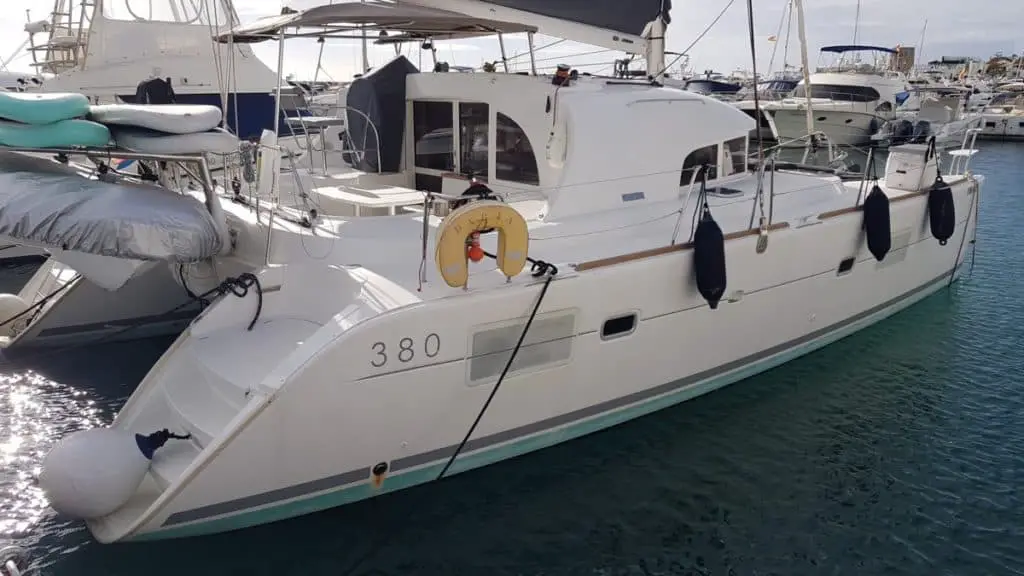
What Exactly Is a Catamaran?
The name ‘catamaran’ actually derives from the Tamil word kattamuram, which means “logs bound together.” The Tamil word applies to the rafts popular throughout Southern India and Sri Lanka, more rustic sailing vessels, typically made of three to seven tree trunks tied together.
In English, the word was adapted to refer to a double-hulled boat or a double-bodied vessel. The presence of two hulls and a wide, central beam allows for better balance and stabilization in the water than the heavily ballasted keels that are part and parcel of most monohull boats.
Do you want to better understand what a Catamaran is? Read my other article!
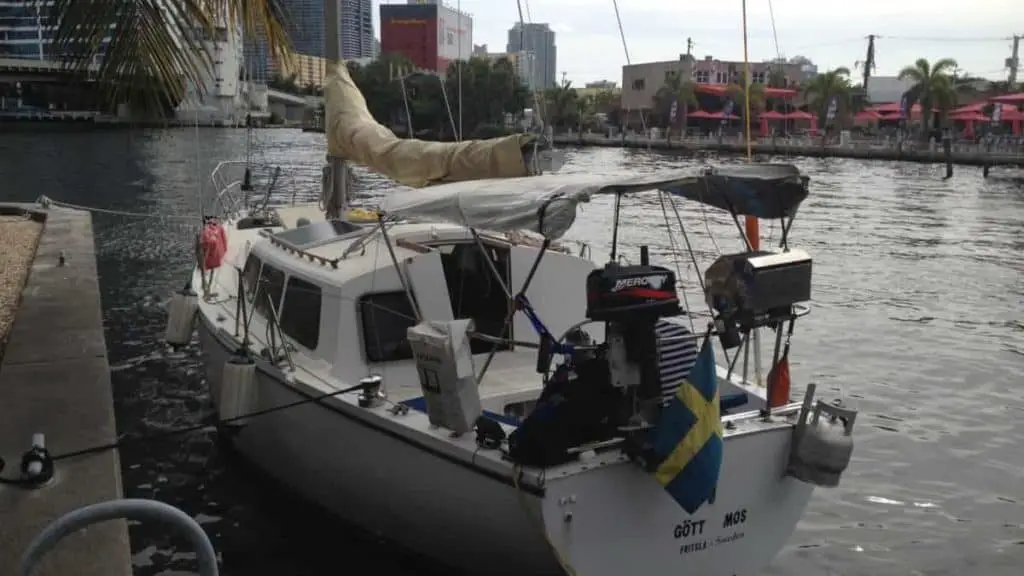
Catamarans vs. Monohulls: Advantages & Disadvantages
Catamarans have experienced a rise in popularity over the last 20 years, well-liked for their size, stability, and effective luxury. Let’s go through and discuss the benefits and tradeoffs of catamarans in several different categories.
There are tons of differences between sailing a mono and a cat, here is the (almost) complete list!
Safety Advantages of a Cruising Catamaran’s Design and Layout
There are significant differences between monohulls and catamarans in terms of their size and architectural design and between the various effects these two factors will have on the security of your individual marine experience. Let’s highlight the most glaring physical differences between the two and how that factors into your individual safety aboard a catamaran.
Stability
Due to their dual hull configuration and buoyancy, catamarans are very resistant to capsize. While a monohull has the potential to sink when capsized, catamarans are essentially stable waterborne vessels that have a natural buoyancy, rendering them literally unsinkable. Catamarans’ positive buoyancy ensures that even in the event of a capsize or fractured hull, they’ll remain afloat no matter what.
Moving around the deck (whether at anchor or during travel) is significantly less risky on a catamaran’s stable platform. There is no need to fret about your drink spilling or items getting knocked over, thanks to the level and stable surface offered aboard a catamaran.
We’ll discuss the best ways to stay safe aboard a capsized cat later on in the article.
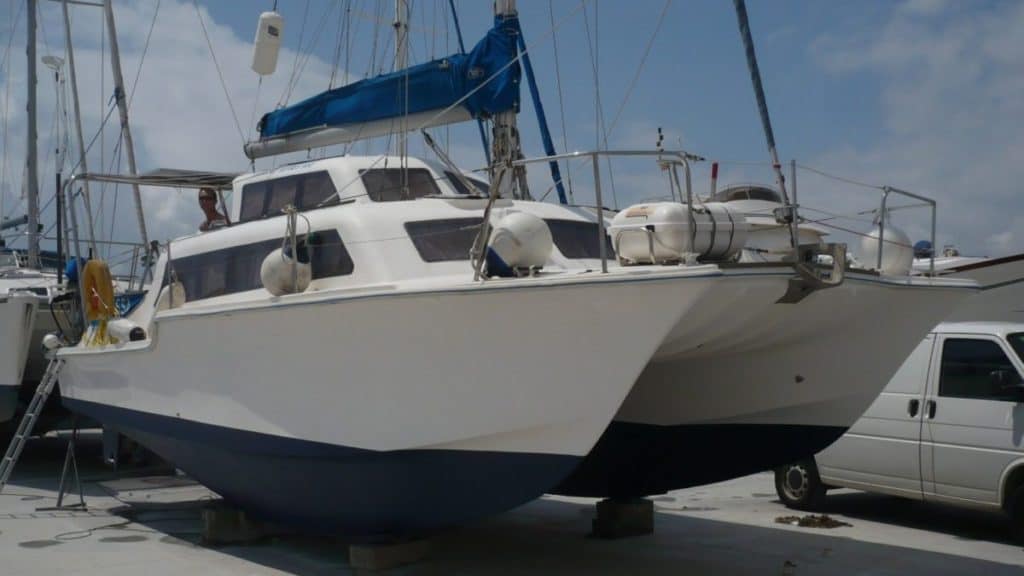
Redundancy
Cruising catamarans have two of almost everything—two hulls and two engines, which negates a bow thruster’s necessity. Having two of everything—including engines—makes engine issues less dire than behind the helm of a monohull.
One of a catamaran’s major benefits is that you always have a backup available, which comes in handy in any situation. In the words of the Catamaran Guru, “The second engine can still move the boat, create electricity, and charge batteries, so no problem.”
The stability aboard a two-hulled vessel “ensure[s] that your crew will not expend unnecessary energy to simply try and stay upright, says Catamaran Guru. “Your crew on a catamaran will be well-rested and alert and will be able to function well if a stressful situation arises.”
They Don’t Roll Easily
Catamarans have a much wider base than monohull boats, so strong wind and waves won’t tilt the vessel nearly as much. Their wide, low-profile design limits their roll inertia, as explained by Sail Magazine. This trait is beneficial near rocky shores, sneaker waves, or out in the open water. Those looking for safety paired with luxury should choose a catamaran for these reasons.
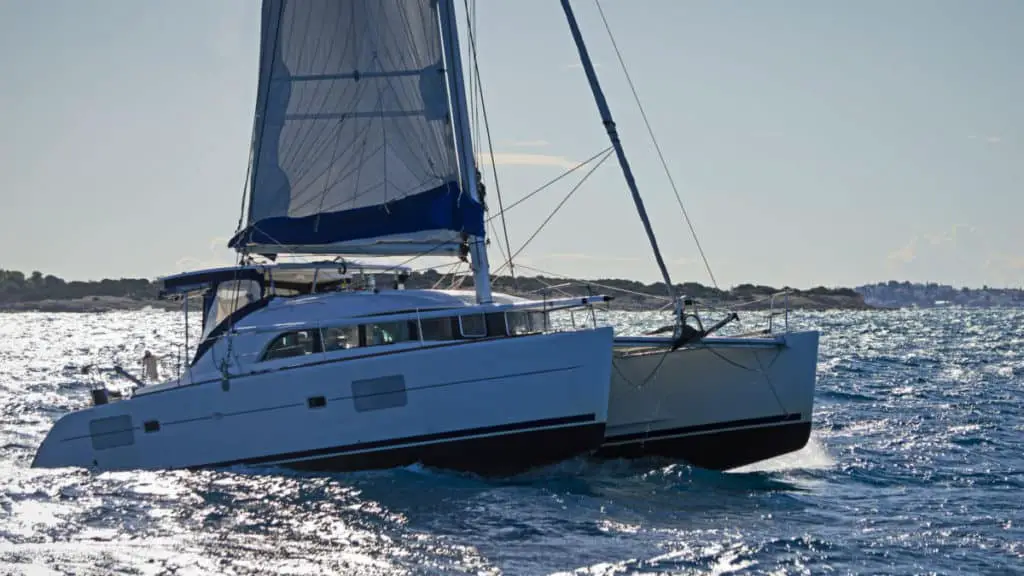
Cruising Catamaran Advantages in Terms of Safety
Cruising Catamarans Are Unsinkable
As discussed above, cruising catamarans have positive buoyancy; even in the event of a capsize or fractured hull, unlike a monohull, a catamaran will never sink. We’ll discuss the best ways to stay safe aboard a capsized cat later on in the article.
Little to No Heeling Aboard
Cruising catamarans don’t heel more than 10-12 degrees, even at full speed. On account of their equal weight-bearing, they don’t roll at anchor either. Whether the wind is acting up or you’re navigating choppy waters, a catamaran will remain pretty stable with little to no rocking or swaying.
Less Chance of Falling Overboard
Not only can heeling cause seasickness and discomfort, but it can also be very dangerous. Changing the sail and reefing is much safer on a catamaran than on a monohull.
“Without the rolling and pitching motion, the danger of falling overboard on a catamaran is considerably less than on a monohull,”
Catamaran Guru.
Fewer Chances of Crew Fatigue and Sea Sickness
Crew fatigue is a genuine threat when sailing the open seas, and a catamaran does a good job of mitigating this problem. Seasickness can be caused by various factors, including anxiety, physical fatigue, lack of sleep, and inability to maintain homeostasis. The stress from this routine and lack of sleep can often be attributed to the caprice of the waves.
If you want to understand what affects seasickness I suggest you read my other article: Can you get motion sickness on a catamaran?
All of these factors serve to disorient and wear out crew members, which in turn can lead to poor decision-making and potentially fatal errors in seamanship. Without the added stress of struggling to remain independently upright, the crew will benefit from a reserve of focus and energy that one might not see in a more erratic vessel.
Basic operations like sail changes and reefing are easier and less dangerous on a stable vessel, diminishing the risk of serious injuries and chances of falling overboard. In the words of Catamaran Guru;
“Fresh and alert crew contributes to a much safer vessel.”
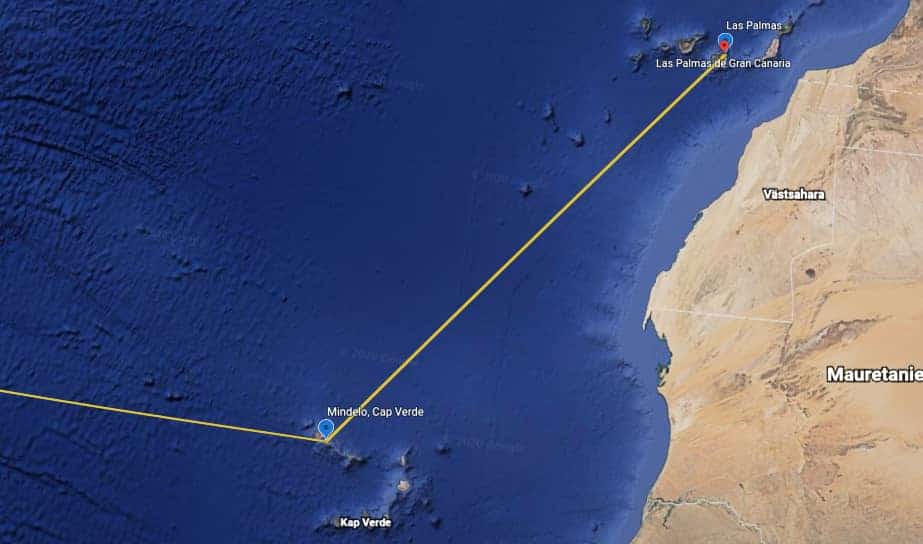
Cat’s Heightened Speed Can Help Outrun or Avoid Bad Weather
The lightness of the cruising catamaran’s form and locomotive power of its dual-engine system makes it faster by comparison than most monohulls. Not only is this ideal in terms of a speedy and efficient means of travel, but it can also prove useful when trying to outrun bad weather.
Some catamarans can have a 220 mile/day (354.06 km/day) cruising capacity. With appropriate forewarning via marine forecasting technology, a cruising catamaran can outrun or at least assist in chartering the boat to a more favored position in avoiding inclement weather.
Cruising Catamaran Safety Disadvantages
Although many are converting from the monohull lifestyle to devoted cat owners, there are still a few areas in which a monohull may be preferable.
- Cramped hulls: Though many more recent models have roomier hull space, the narrow hulls of many catamarans can feel a little claustrophobic. David Parkinson of Yachts International compares the experience to being “like living in a tube” and argues that communicating with individuals in the opposite hull might prove difficult if an emergency arises.
- It’s better for experienced sailors: On account of their somewhat cumbersome nature, in inclement weather, it’s helpful to have a more experienced crew. Although catamarans are quite stable in nature, there is always the possibility of capsizing. As discussed, a catamaran will never sink, but catamarans do not have the same ‘self-righting’ aptitude possible in monohulls.
Catamaran Safety Issues and How To Deal With Them
Capsizing and falling overboard are the two foremost issues that crew worry about while sailing a catamaran. Here, we’ll discuss how to avoid these situations and what to do should they arise:
Capsizing
The number one safety concern of most potential catamaran owners is fear of capsizing.
When do catamarans actually capsize? forget the myths, read my scientific explanation.
According to Catamaran Guru, many sailors in the cat community hold that the concept of capsizing is almost mythological in nature.
“Modern cruising catamaran design has critical design criteria that safeguards against this very thing. They are designed with a low center of gravity and a safe power-to-weight ratio to ensure that it is virtually impossible to lift a hull, regardless of the conditions.”
According to Nick O’Kelly—a former meteorologist turned full-time catamaran captain—fear of capsizing is one of the last things most catamaran sailors think about in terms of potential danger on the open sea. You can watch his video here:
Many experienced seamen argue that whatever would capsize a catamaran would do the same to a monohull. Oddly enough, being struck by lightning is more likely, as catamarans statistically tend to attract lightning more so than their single-hulled counterparts.
Here’s how to avoid capsizing:
Stay Informed Regarding Weather Conditions
According to record-breaking multihull sailor Brian Thomson, the worst thing to face on a catamaran is a sudden increase in wind. Always be prepared to reduce sail early when you see a storm. Normally you can see a storm rolling in during the day, and at night it will show up on the radar, though most ships always reef at night anyway.
“I think watching the weather, really understanding what’s happening with the weather…it affects how you sail day and night,”
Thomson elaborates.
“The more information you have on the weather, the easier it is to decide on your sail plan.”
Understanding Your Boat
Try to understand better your boat’s unique composition and the elements that make it waterborne. According to Sail Magazine, you should make an honest evaluation of your boat’s attendant strengths and limitations before taking it out.
“The boat’s manufacturer should also give you a sail-selection chart specifying safe sail limits for any conditions, If no such guide exists, a simple heeling gauge may be helpful.”
Sail Magazine
According to Nigel Irens, a leading yacht designer, it’s important to understand exactly how your boat will sit on the water when upside-down; he notes that most experienced sailors will use this practice with a dinghy, though it’s significantly harder with larger vessels. “There are ways of evaluating through calculations where [your boat] will float, or pretty much exactly,” he notes in this video from Yachting World Magazine:
It’s a much more complicated process than one might think, and oftentimes these estimations are based on a virtual model. “I think it’s fundamental before you consider what you’re going to do in the very unlikely event of a capsize, the first thing is you absolutely have to know what level the boat’s going to float,” observes Irens. “So that’s the first thing, and up to us technicians really.”
Once this is estimated, the rescue and survival gear inside the boat should be located in a way that makes it accessible if the boat gets flipped over.
If you want to understand how to prepare your boat for a capsize, I would definitely recommend reading the book Multihull Seamanship by Gavin Le Sueur. The drawings are a little bit lame, but the information is beneficial, and the book costs around 15$ on amazon.
Assess Your Route
Sail Magazine asserts that the sea room should be the first thing considered in terms of deciding trip logistics. “Are you in open water and able to sail around the conditions? Or are you sailing along a coast with limited room to leeward?” These are the types of questions that owners need to ask themselves before departure.
“On most offshore passages, advanced communications and weather information should preclude you from ever experiencing true gale or survival conditions,” observes Sail Magazine.
They note that the riskiest times of year to sail are between seasons, particularly when on a North-South route.
“Early spring or late autumn passages between New England and the Caribbean, in eastern Atlantic waters off Europe, or on routes between the South Pacific and New Zealand are where you typically have a chance of experiencing a good wallop offshore.” Sail Magazine also encourages following the advice offered in Jimmy Cornell’s World Cruising Routes, which should lower your risks of running into inclement weather.
You’ll need to understand what direction to sail and your vessel’s capabilities—whether sailing windward or leeward will be to your best advantage.
Avoid High Latitude Sailing
It’s not recommended to take your catamaran to high latitude ports. High-latitude locations tend to be the domain of monohulls, as there are very few metal catamarans out there. There also tend to be many “deadheads” in these waters, which can damage your boat.
But why sail to the cold and nasty when you can enjoy crystal clear warm waters!
What To Do in the Event of a Capsize
In the event of a capsize, it’s best to seek refuge in the hulls. Your boat is watertight when it’s right-side-up, so naturally, it will be airtight the wrong-way up. Irens advises against rushing to open the emergency exits right away; if air rushes in or rushes from out of the hull and is replaced by water, obviously, the boat will float lower.
Brian Thomson advocates that you’d want to head to the parts of the boat that are normally lower as if the boat flips over, they will become the highest points.
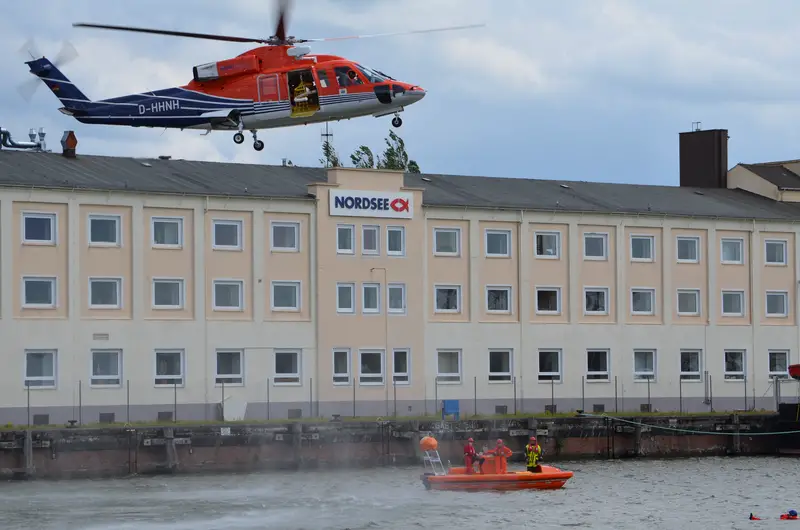
Avoid Man Overboard
Having someone fall overboard is a problem most crews are far more likely to face than capsizing. The most important thing to keep in mind during a rescue mission is that you don’t want to further injure the victim, especially by hitting them with a hull or an unfortunate scrape with the propeller.
Cruising the Caribbean, we would routinely practice man overboard (MOB) drills;
The one rule about MOB is that you should do everything you can to avoid it.
This might seem obvious, but try it out a few times, and I dont mean on a beautiful calm day. Try it on a little windier day with some swells, and you’ll quickly understand why a MOB situation will be life-threatening once the weather gets a little nastier. Keep your crew on or inside the boat!
What To Do in the Event of Man Overboard
Nigel Irens recommends that it’s best to “drift down onto the [victim],” so you don’t lose contact with them. As there’s not one but two propellers just beneath the surface, you wanted to make sure they aren’t pushed beneath the boat where their legs might be in danger.
Irens says that the victim should be on the windward side, and the boat should come in downwind from them—perhaps turning a slightly upwind—before gently drifting towards them.
Brian Thomson recommends motoring back and coming up gently to the person, with someone on deck at the ready to pull them onboard—via a life sling, harness, or even a chair.
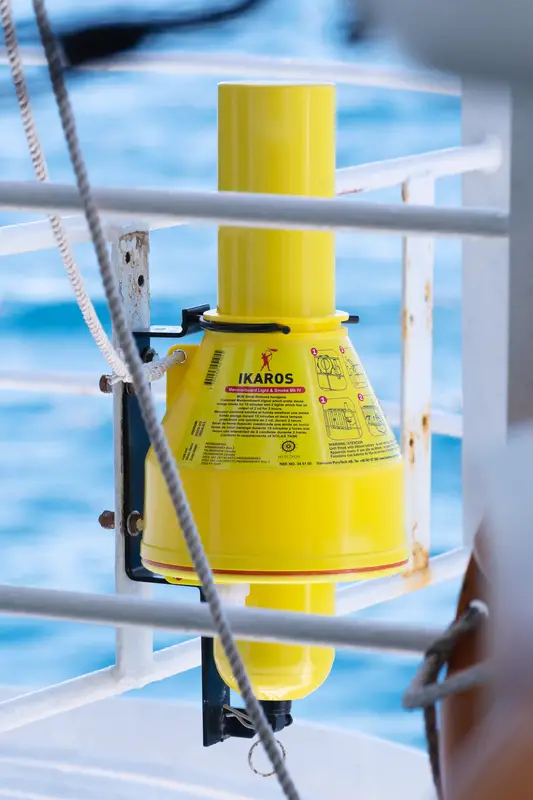
Offshore Catamaran Sailing Is Best Left to Experienced Sailors
In the end, experience is the most important factor in determining the crew’s safety, and what seems to matter most is the skills of the crew running the boat. The American Sailing Association notes that when switching over from a monohull,
“the entire sailing experience is different; the motion of the boat is different, you have to trim the sails differently, and pay attention to other factors that you might not be used to.”
In sailing (and life), one should prepare for the worst. Catamaran’s stability, buoyancy, and redundancy are some of their best features, but even these safety features don’t balance out a lack of sailing knowledge and experience.
Conclusion
Cruising Catamarans are very safe on account of their stability and buoyancy. While fears of capsizing are mostly unfounded, staying on top of the weather forecast, understanding your boat, and mapping out your route beforehand are the best ways to avoid any sort of issues.
If someone falls overboard, it’s best to gently let the vessel drift towards the victim with a life raft or other rescue device on hand. Following the above advice will help you relax and enjoy the comfort, space, and quality sailing experience of your cruising catamaran.
